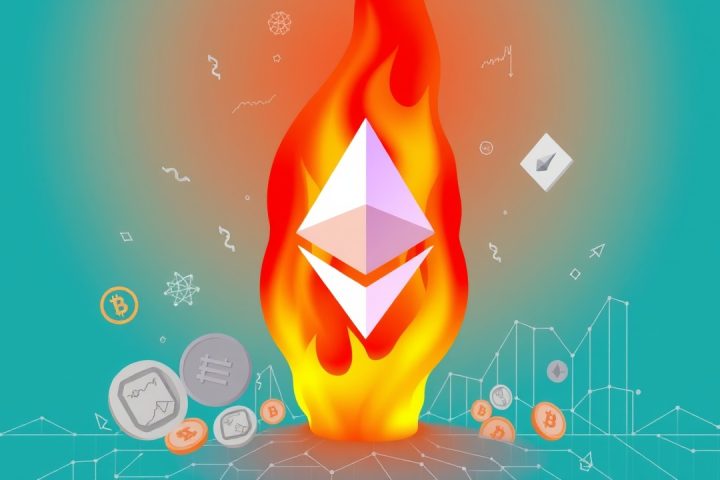Introduction to Alkanes
In the ever-evolving landscape of Bitcoin advancements, the introduction of “Alkanes” is making waves among enthusiasts of the Ordinals and Runes ecosystems. But what exactly is Alkanes? It is a newly developed metaprotocol that brings trustless smart contracts directly onto the Bitcoin blockchain, bypassing the need for external bridges or execution layers. This innovation allows developers to create applications and tokenize various assets natively on Bitcoin, significantly broadening the blockchain’s functional capabilities.
Development and Functionality
Alkanes emerged from the conceptualization of Oyl Corp after two years of extensive research aimed at enhancing Bitcoin’s programmability. The protocol, co-founded by Alec Taggart, Cole Jorissen, and Ray Pulver, enables developers to inscribe smart contracts into Bitcoin’s data layer using WebAssembly (WASM) virtual machines. While smart contracts are prevalent on platforms such as Ethereum and Solana, Bitcoin has historically had limited options for decentralized finance (DeFi) solutions due to its lack of native smart contract support. This limitation has inspired infrastructure developers to innovate, and Alkanes represents a leap forward.
The functionality of Alkanes closely resembles other protocols, such as Ordinals and Runes, yet it extends the capabilities of Bitcoin by enabling programmable smart contracts. Utilizing a compact and efficient method, Alkanes leverages Bitcoin’s witness data and the OP_RETURN field for executing and monitoring state changes in the blockchain. This approach allows for advanced applications including automated market makers (AMMs), staking contracts, and non-fungible token (NFT) exchanges, all executed directly within the Bitcoin network.
Complementing Existing Protocols
Rather than viewing itself as a competitor to Ordinals or Runes, Alkanes is designed to complement and coexist with them. While Ordinals have boosted Bitcoin’s cultural appeal, Alkanes aims to empower that movement with more robust functionalities. The protocols are built to interoperate seamlessly; for example, users owning Ordinals can utilize them to mint new assets via Alkanes. Hence, Alkanes serves as a versatile foundation for further Bitcoin-centric innovation.
Vision and Innovation
The vision of Oyl Corp’s founders, seasoned professionals from the DeFi sector of Ethereum, sees Bitcoin’s ability to evolve beyond its initial use as a value store. They emphasize that the success of Ordinals has ignited a surge of experimentation on the Bitcoin network, paving the way for more expressive applications. According to Taggart,
“Alkanes showcases that Bitcoin can progress without needing to replicate Ethereum’s framework, creating a native environment for supporters of Bitcoin’s inherent capabilities.”
In addition to traditional contract capabilities, Alkanes introduces “protostones”, a novel data structure that functions similarly to runestones seen in Runes. This allows each protostone to carry multiple messages and facilitate an array of functions including issuance, minting, and asset swapping—all governed by a WASM execution environment.
Token Standards and Community Growth
Every asset developed on Alkanes is regarded as both a token and a contract, utilizing a factory model to streamline the deployment of contracts. This model encourages efficiency, allowing developers to simply update parameters rather than creating entirely new contracts for each asset, which effectively conserves blockspace and reduces transaction costs.
On Alkanes, fungible tokens resemble Ethereum’s ERC-20 standard and include full smart contract interoperability. The inaugural token launched on this platform is Diesel, which aligns with Bitcoin’s emission schedule using a specific opcode that tracks the block rewards, directly linking it to Bitcoin’s halving cycles. Unlike the naming conventions with Runes and BRC-20s, ticker names in Alkanes are not universally unique; instead, every token is assigned a distinct identifier, allowing duplicate token names under different IDs, thereby mitigating the risks of name squatting.
Communities around Alkanes are flourishing, with notable NFT projects like Alkane Pandas cultivating dedicated followings, alongside Oyly, which was the first collection to utilize a free mint strategy on the platform. The Alkanes team is also working on a dedicated AMM and forming collaborations with various ecosystem projects involving stablecoins, wallet libraries, and DeFi protocols, thereby empowering developers to build comprehensive applications leveraging solely Bitcoin’s native attributes.
Open Source Development and Future Prospects
In conjunction with building its ecosystem, Oyl Corp has made strides with its indexing engine, Metashrew, releasing it and associated infrastructure as open-source software. This approach allows developers to explore, adapt, and contribute to the development of Alkanes.
Alkanes was officially launched in early 2025 at block 880000, marked by the introduction of the Diesel contract. Following this event, a community mint was conducted, tailored to trigger as soon as the protocol began tracking messages from that block onwards. The project has since seen organic growth spurred by developer exploration and collaborative contributions from the Bitcoin community.
Ultimately, Taggart articulates the mission behind Alkanes succinctly:
“Our aim isn’t solely to introduce another token standard; we aspire to provide a framework where composability, liquidity, and true sovereignty can finally converge on the Bitcoin network.”
Edited by Andrew Hayward




